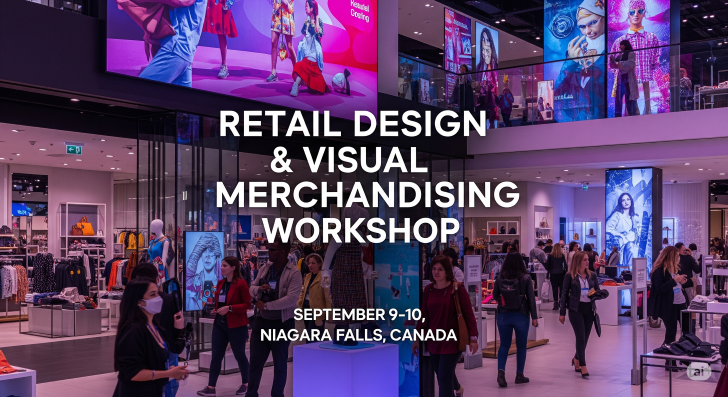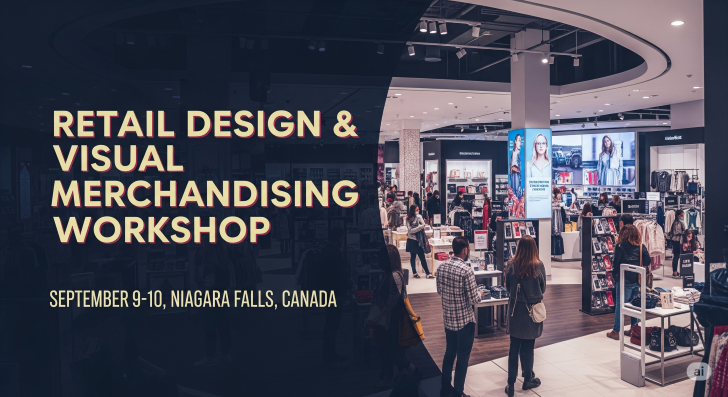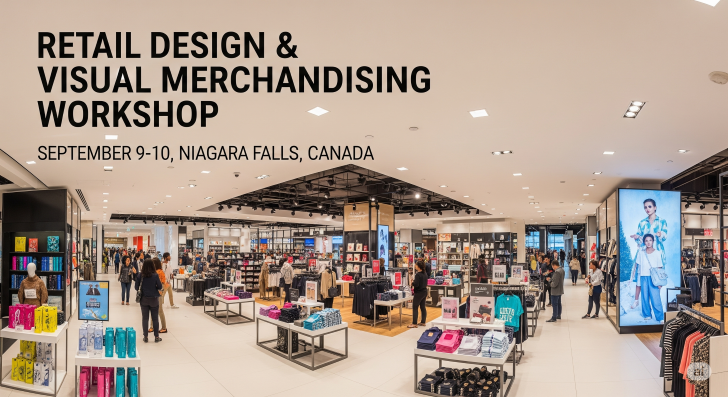
Disruptive Innovations and Esoteric Knowledge with Exclusive Information on Visual Merchandising
The retail world is undergoing a seismic transformation—and at the epicenter of this evolution is visual merchandising.
No longer just about product placement or color coordination, today’s visual merchandising is a sophisticated blend of design, psychology, data science, and disruptive innovation.
Those who understand the deeper, often esoteric layers of this craft are shaping retail spaces that do far more than display—they compel, convert, and captivate.
In this blog, we’ll expose you to exclusive information rarely shared outside professional circles.
We’ll break down the most disruptive innovations in visual merchandising and offer esoteric knowledge that elite retail designers use to stay years ahead of their competition.
Disruptive Innovation: Predictive Visual Merchandising Using AI
One of the most groundbreaking shifts in visual merchandising is the integration of artificial intelligence.
Predictive visual merchandising uses AI to forecast what types of displays, colors, and layouts will resonate most with future customer behavior—not just current trends.
Exclusive Information:
Some retailers now use machine learning algorithms to analyze eye-tracking data, POS records, and heat maps.
The AI then predicts which types of displays are most likely to result in high conversions during upcoming promotional windows or seasonal shifts.
Esoteric Knowledge:
The AI doesn’t just guide visual layout—it helps test theories faster than human cycles allow.
For example, it may reveal that placing a “hero product” three feet left of the typical focal point yields better dwell time for left-handed dominant demographics—a layer of insight most merchandisers wouldn’t think to explore.
Disruptive Innovation: Immersive Augmented Reality Merchandising
While most people are aware of AR’s potential, the truly disruptive use is in real-time, in-store AR experiences that change the way customers navigate and engage with a space.
Exclusive Information:
Leading brands are embedding AR not just into mirrors or apps, but directly into physical fixtures.
Shoppers scan a product, and the shelving display morphs—visually projecting recommended pairings, brand stories, or seasonal alternatives.
Esoteric Knowledge:
Advanced setups allow these AR experiences to adapt based on demographic recognition.
A teenager might see a different lifestyle pairing than a business traveler standing in the same spot—turning a single display into hundreds of micro-narratives.
Disruptive Innovation: Fluid Merchandising Structures
Forget fixed shelving.
Innovative retailers are investing in kinetic displays—shelving, lighting, and signage that move throughout the day to guide customer behavior dynamically.
Exclusive Information:
One store in Seoul has implemented a robotic track system that rearranges modular product displays based on real-time customer traffic.
During lunch hours, fast-move items rotate to the front. In the evening, curated lifestyle kits take center stage.
Esoteric Knowledge:
This fluid model isn’t just logistical—it taps into chronobiology, the science of daily rhythm.
Products are displayed to align with natural cognitive and emotional cycles—restful items in the morning, stimulating products in the afternoon.
Merchandising meets neuroscience.
Disruptive Innovation: Display-Neutral Retail Spaces
In the traditional model, displays are the core of the retail floor.
But some forward-thinking brands are flipping the formula—building display-neutral spaces where the merchandise is backgrounded and the customer experience takes center stage.
Exclusive Information:
These spaces often feel more like lounges, galleries, or studios.
Products are subtly integrated into seating, light fixtures, or interactive panels, placing the customer in a curated environment rather than a marketplace.
Esoteric Knowledge:
This philosophy stems from phenomenological design, where space is meant to be felt rather than observed.
It creates a sense of ease, exploration, and exclusivity—turning the shopping experience into a form of personal introspection.
Disruptive Innovation: Holographic Merchandising
Holograms aren’t just sci-fi anymore.
Advanced brands are using holographic visuals to create dynamic, three-dimensional product presentations that don’t require physical inventory.
Exclusive Information:
This is especially valuable for limited-edition items or luxury goods.
A high-end shoe display might feature only one sample physically, with holograms presenting alternative styles, colors, and use cases around it in 3D space.
Esoteric Knowledge:
The real power of holographic merchandising lies in perceived scarcity.
Customers are more likely to engage with displays they can’t physically handle—heightening mystique and urgency.
It flips the “try before you buy” model into “imagine before you touch.”
Disruptive Innovation: Sound-Based Spatial Merchandising
The use of directional audio in merchandising is radically changing how shoppers perceive and engage with retail spaces.
Exclusive Information:
Directional sound beams can isolate audio to very narrow pathways.
For instance, standing near a skincare display might trigger a soft narrative about the product’s origins, but step just two feet away and silence returns.
Esoteric Knowledge:
Spatial sound can be used to anchor memory.
Our brains are highly attuned to auditory association—meaning that ambient sound customized per zone dramatically improves recall, especially when paired with high-margin or seasonal products.
Disruptive Innovation: Neurodesign in Visual Merchandising
Neurodesign involves applying neuroscience principles—how the brain processes shape, color, texture, and flow—into every detail of a retail display.
Exclusive Information:
Top merchandisers are working with neuroscientists to test micro-interactions.
For example, displays are calibrated to elicit dopamine triggers by using smooth curves, specific color tones (like oxblood red), and movement elements that mimic natural motion.
Esoteric Knowledge:
One such principle is “biophilic flow”—the idea that the human brain responds positively to design cues mimicking nature.
Displays designed with fractal patterns, soft organic lighting, and tactile surfaces inspired by leaves or woodgrain can unconsciously increase shopper comfort, trust, and spend.
Disruptive Innovation: Transaction-Free Merchandising Zones
What happens when a customer can’t buy what’s displayed? For some luxury and lifestyle brands, that’s the point.
Exclusive Information:
These curated zones feature aspirational or archival items meant purely to inspire.
They’re non-shoppable, and designed to immerse the shopper in a narrative without sales pressure.
Esoteric Knowledge:
This strategy leverages psychological distance—the further a product feels from being “just another SKU,” the more customers ascribe meaning, prestige, and emotional value to the brand itself.
It’s not about selling an item—it’s about selling the mythos.
Exclusive Retail Intelligence: The Role of ‘Micro-Voids’ in Display Psychology
Here’s something few merchandisers ever talk about: the power of micro-voids—tiny spaces within a display that allow for breathability and subconscious rest points.
Esoteric Knowledge:
Our brains need pauses when visually consuming information.
Strategically placed micro-voids (small gaps between products or layers of negative space) allow shoppers to “reset” their attention, making them more receptive to the next product layer.
Exclusive Application:
Merchandisers who optimize for this see better engagement curves. It’s the difference between overwhelming and rhythmically captivating.
Conclusion: The Future of Visual Merchandising Is Hidden in the Details
As visual merchandising evolves into a cross-disciplinary science, the most powerful tools are no longer visible to the naked eye.
From neurodesign to AI-driven layouts, soundscapes to holography, today’s most successful visual strategies blend art, science, and psychology.
To future-proof your approach:
-
Experiment with multi-sensory layering that goes beyond vision.
-
Test AI-informed planograms and heatmaps to uncover unknown truths.
-
Incorporate time-based merchandising cycles that align with human rhythms.
-
Use esoteric design principles to influence emotion, not just attention.
True merchandising mastery isn’t about how many people see a display—it’s about how deeply they feel it.
By embracing disruptive innovations and exclusive insights, you don’t just build beautiful spaces—you design unforgettable experiences.





